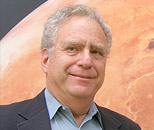Science and Enabling Technologies to Explore the Interstellar Medium - Part II
January 13-15, 2015
California Institute of Technology -
Pasadena, CA 91125
Final Report
Important Information about the KISS ISM Program: 2017 press articles appear to have included erroneous information about a Keck Institute (KISS) study. KISS has not produced a study about using SpaceX's BFR to get to 'Oumuamua. KISS did convene a program to study possibilities for future missions to reach the interstellar medium outside the solar system, but that study took place before the discovery of 'Oumuamua and is not applicable to that object.
Workshop Overview:
Recent discoveries reported in 2012 and 2013 by Voyager-1 and Kepler have brought into focus two end-points of what is now commonly referred to as the Interstellar Medium (ISM). Whereas Voyager-1 is beginning to explore the ISM in-situ, the Kepler space-based telescope and other Earth-based telescopes have detected a plethora of potentially Earth-like planetary systems around other stars or "exoplanets". The results of these two missions frame the context for further intellectual curiosity, scientific questions, and exploration goals that will define objectives for innovative and far-reaching missions heading out of our solar system and someday reaching for the stars.
.jpg)
(source: Interstellar Probe Exploring the Interstellar Medium and the Boundaries of the Heliosphere Report (2002), NASA/JPL.)
The goals of the workshop are to: articulate key scientific questions; identify near-term science exploration goals; derive mission objectives and preliminary design concepts that can be realized in the next two decades; derive flight system and science measurement requirement; assess key mission, system, and operations technology drivers; develop a technology maturation plan that will be proposed to KISS and JPL for follow-on funding.
A Horseshoe Einstein Ring. (source: Hubble, NASA)
The technical challenge and the focus of the workshop is to assess mission implementation techniques that will enable affordable robotic probes to reach the ISM within 10 years with velocities up to 10 times faster than Voyager, and be designed to last 50 years or longer. By comparison, Voyager-1 is now traveling at a speed of 17 km/sec, and has taken 35 years to reach the ISM. Meeting this challenge would constitute a revolutionary capability that would enable multiple scientific probes to launch and return initial scientific results of and from the ISM within a decade, and continue for several decades.

Heliosphere and Interstellar Medium. (source: Interstellar Probe Exploring the Interstellar Medium and the Boundaries of the Heliosphere Report (2002), NASA/JPL.)
Workshop Participants:
- Leon Alkalai - JPL/Caltech
- Nitin Arora -JPL/Caltech
- Manan Arya - Caltech Campus
- Nathan Barnes - L'Garde Inc.
- Travis Brashears - UC Santa Barbara
- Mike Brown - Caltech Campus
- Paul Wilson Cauley - Wesleyan University
- Bob Cesarone - JPL/Caltech
- Louis Friedman - The Planetary Society
- Paul Goldsmith - JPL/Caltech
- Mae Jemison - 100 Year Starship
- Les Johnson - NASA George C. Marshall Space Flight Center
- Paulett Liewer - JPL/Caltech
- Philip Lubin - UC Santa Barbara
- Claudio Maccone - International Academy of Astronautics/Istituto Nazionale di Astrofisica
- Jared Males - University of Arizona
- Kyle McDonough - UC Santa Barbara
- Ralph McNutt - Johns Hopkins University Applied Physics Laboratory
- Richard Mewaldt - Caltech Campus
- Adam Michael - Boston University
- Edward Montgomery - Space and Missile Defense Command
- Merav Opher - Boston University
- Elena Provornikova - Catholic University of America
- Jamie Rankin - Caltech Campus
- Seth Redfield - Wesleyan University
- Michael Shao - JPL/Caltech
- Robert Shotwell - JPL/Caltech
- Ed Stone - Caltech Campus
- Thomas Svitek - Stellar Exploration, Inc.
- Mark Swain - JPL/Caltech
- Slava Turyshev - JPL/Caltech
- Michael Werner JPL/Caltech
Summary of Workshop #1 |
|
|
Leon Alkalai |
Post Workshop: Summary of Action Items
|
Workshop Presentations |
|
|
Edward E. (Sandy) Montgomery IV |
Beamed Energy Propulsion for Missions to the Interstellar Medium (ISM) Modes and Past Studies
|
|
Louis Friedman |
Laser Propulsion Demo Consideration
|
|
Les Johnson |
Solar Sails for Exploration of the Interstellar Medium
Propulsion Technology Assessment: Science and Enabling Technologies to Explore the Interstellar Medium
|
|
Eric Archer |
RF Communications for 250 AU Can we do better than Voyager?
|
|
Abhijit Biswas |
Interstellar Optical Communications
|
|
Michael Werner |
Interstellar Probe: Exploiting the Dark Sky
|
|
Manan Arya |
Cosmic Squid: A Giant Spinning CubeSat Solar Sail
|
|
Ralph L. McNutt |
Solar Sails and Strength of Materials
Ballistic Mission Trades
|
|
Merav Opher |
Science in the Heliosheath and Heliopause
|






